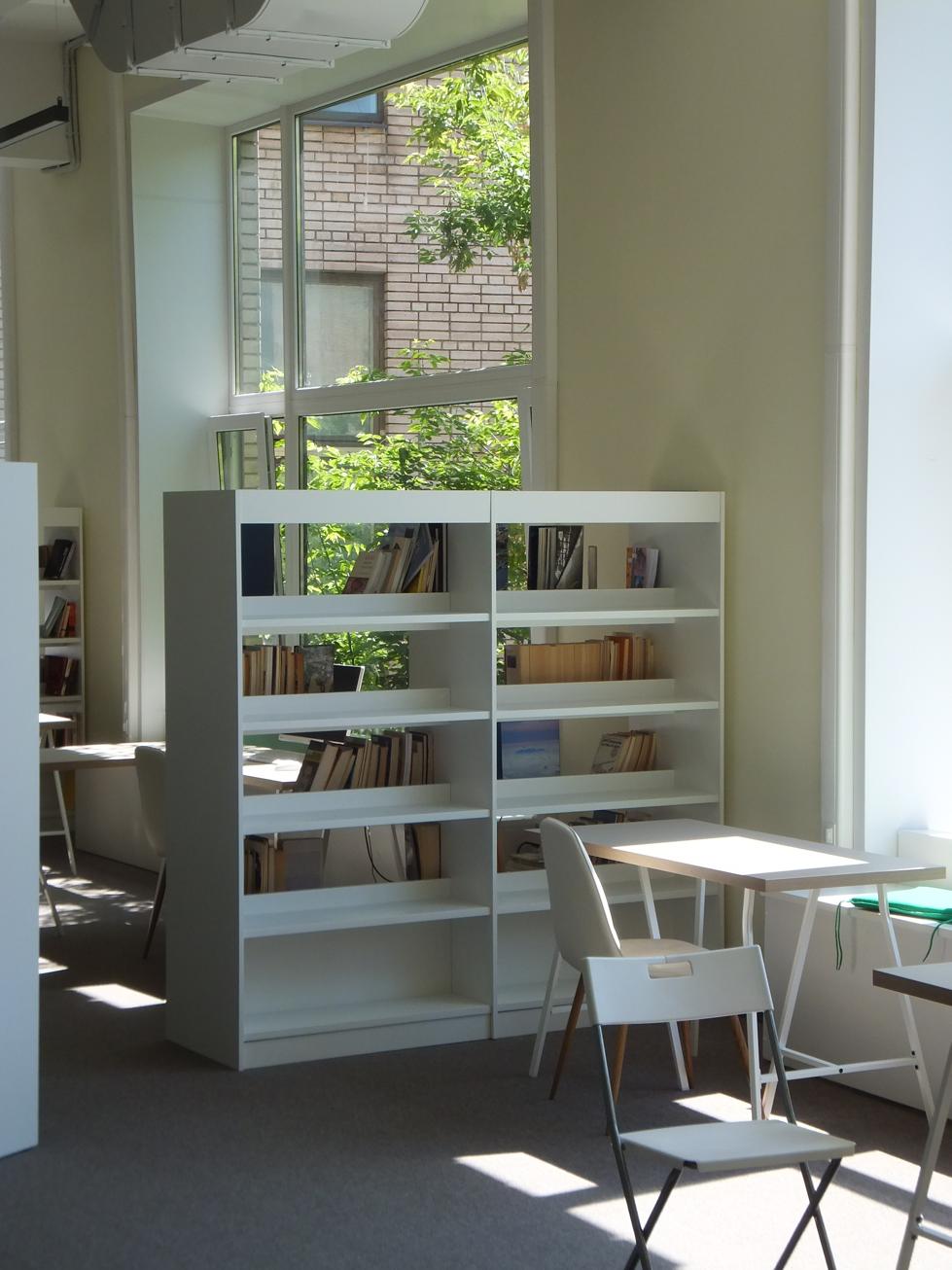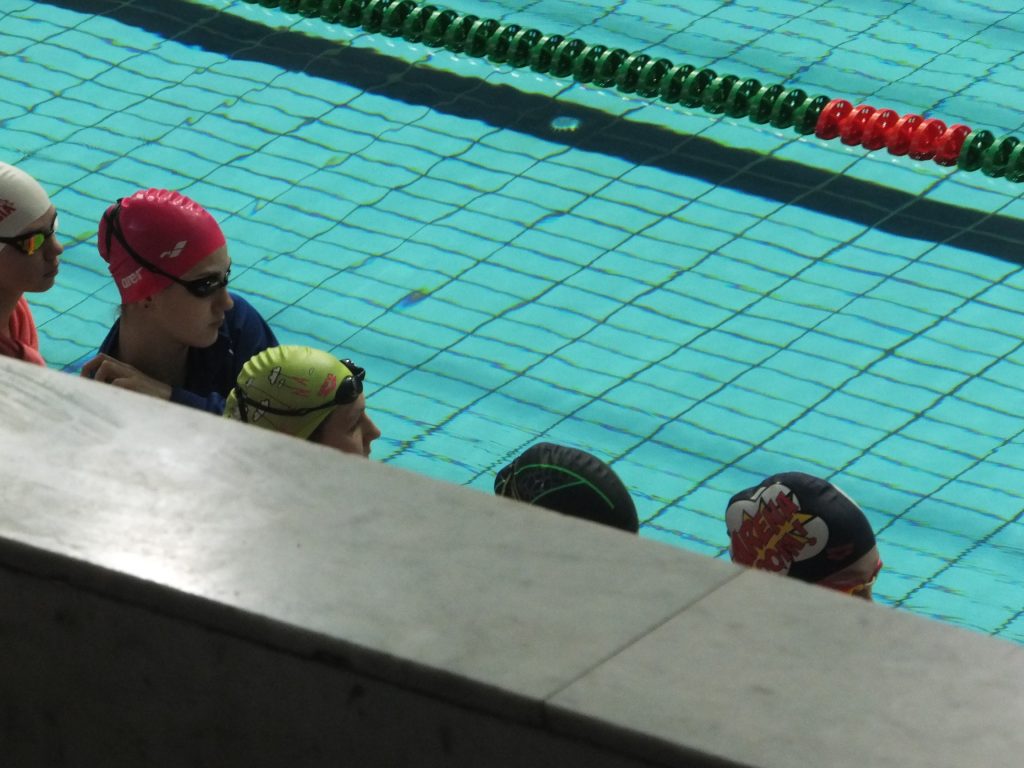




Within 20 minutes walking distance from HSE main campus Russian poetry meets Japanese literature – as well as German, French and Spanish literary works. We are entering Moscow’s library for foreign literature (LIBFL). The excursion was part of the research seminar for public administration undergraduates at the Higher School of Economics that Valeriya Utkina teaches together with me.
It is no secret that Moscow is a global knowledge hub, providing residents and foreign scholar with dozens of well-staffed major libraries, and even hundreds smaller public libraries across the city’s boroughs. In what way the library of foreign literature distinguishes itself from, say, the Turgenev library, Central Lenin library, or HSE’s own library? What is special about LIBFL?
To some it might be the story of a young female Russian librarian who started from a collection of some 100 French, German and English books in 1922. In the challenging years after Bolshevik revolution she managed to nurture and extent this collection that would later become the library’s stock. By the way, the library will celebrate his 100th anniversary soon.
Others may like the open-space concept of the library. The library welcomes its visitors into a green yard with outdoor seats leading to the main entrance and the reception. This contrasts most public buildings in Russia that start with a massive door followed by turnstiles and security guards.
The library itself separates into multiple reading halls and accompanying institutes for the different language. There is not a single huge reading hall. There is a center for French literature with French books, a Dutch section that also informs about career opportunities; there is Japanese center with Japanese publications, and so on. Each center differs in its interior decoration, cultural atmosphere, and air condition. Most centers offer language classes as well, English, Japanese, German, you name it. Pearson, an educational publishing house has an English learning center within the library; the German Goethe institute is present as well.

Another interesting feature is the library’s collection of rare books. A rare book is a publication that was either printed in small numbers (less than 1,000 times), before 1831, or that contains a valuable bookplate (ex libris or super ex libris) that indicates the former owner of a book.

Today we saw for ourselves that LIBFL is an open minded and very active educational powerhouse today that is open to scientists and the general public as well.

Es geht los: Die russischen Schwimmerinnen und Schwimmer können ab heute Ihre Tickets für die EM in Glasgow lösen. Die Russischen Meisterschaften im Schwimmen, das Pendant zu den DMS in Berlin, haben begonnen. Wie immer im geschichtsträchtigen CK Olympiskiy Stadion, dem Olympischen Pool von 1980 am Prospekt Mira.
Die EM-Normen sind 21,96s (25,02) bzw. 48,64 (54,02) auf der Kurzstrecke (50/100m) und 1:46,78 (1:57,28) und 3:47,28 (4:07,75) auf der Mittelstrecke (200/400m).
Mit einer 3:45,84 hat Alexander Krasnich im Finale über die 400m Kraul also heute sein Ticket gelöst – und ist Russischer Meister! Herzlichen Glückwunsch! Er hat das Rennen von vorne weg geschwommen; bis auf die ersten 50er ist er konstant mit 28er Zeiten geschwommen, mit einem 27er Finisch.
P. Andrysenko hat als zweiter angeschlagen und macht mit einer 3:47,25 eine Punktlandung unterhalb der EM-Norm von (3:47,28).
In den Halbfinals über die 50 Schmetterling erfüllte Nikita Koroljev mit einer 23,47 als einziger frühzeitig die EM-Norm (23,48) und ist ein Titelanwärter. Mal sehen, was in den Finals noch so passiert.
Außerdem standen u.a die Halbfinals über die 50 Rücken und 50 Schmett der Männer und das Finale der 400 Lagen der Damen auf dem Programm (siehe Fotos vom B-Finale).

Yet an updated metro plan sticker in all the cities metro carriages (pictured above). Four new station on the yellow line in Moscow’s north-east recently were put into operation. Besides extending the yellow line the four new station interconnect with the light blue line, the violet line and the dark green line.
Parts of the new track simultaneously realize the first chunk of the second belt line that is currently under construction across Moscow.
In public services terms accessibility of public transport increased, yet again.

Moscow’s annual swimming championships on the long course (50m) have been taking place from March 13-16, at CK Olympisky, the former Olympic pool next to Metro station Prospekt mira. Demonstrating strong performance in the competition will yield sportmen and women a ticket for the Moscow team within the Russian national team. Day 3 in the competition (today, March 15) saw the heats for 50m butterfly (men), 100m free (men), 200 free (women), and 200 backstroke (women), as well as some finals. Another highlight were the heats for the 200m breast (men): Current European record holder Anton Chupkov (Антон Чупков) won his heat in the 200m breast with an exciting 2m:11s – this is not far for his 2:09.96 at the FINA championship in Budapest last year (2017) – and this was just in the heats!
The championships have been demonstrating that Moscow’s swimmers are well prepared for upcoming national and international events. On the 100 free distance there were 17 heats today, the best time in the heats was a 0:49.55, I recognized plenty of 0:52 and 0:53, nobody finished with more than 0:58.
Anton Chupkov’s race also demonstrated what makes the difference between good and excellent performance: his four 50m split times were 0:30, 0:33, 0:33, and 0:30 (according to my own time recording). With the first 50m being the fastest due to starting dive, Anton kept a constant pace during his 2nd and 3rd 50m and in the finish. I counted 12 strokes on this second 50m, 14 on the third 50m and 18 strokes during finish.
So get ready for the Russian championships in April – see you at CK Olympiskiy.




Berlin, Germany’s capital, currently runs a pilot project with a fleet of 25 e-buses. This is something we could classify as innovative behavior, since an innovation is a novel and useful idea, project or practice that is new to the organization adopting it, regardless of prior adaption in peer units. Good.
Berlin’s pilot project received bad media coverage, however. Not so good. Low operating distance, about 150 kilometres, issues with drive and control technology were among the main teething troubles. But, hey, these are teething troubles. Sandford Borins in his 2000 PAR article on innovation in the US civil service posited that
„the media’s interest in exposing public sector failings […] is yet another impediment to innovation“ (p. 500).
Borins, S. (2000). Loose Cannons and Rule Breakers, or Enterprising Leaders? Some Evidence About Innovative Public Managers. Public Administration Review, 60(6), 498-507.
The story about Berlin’s fleet nicely supports this notion. But the point I want to make is another one: namely that all the effort now being put into e-buses partly are reinventing the wheel. Why?
Moscow, Russia’s capital, and several other cities in Russia and Eastern Europe still use an alternative technique, was was once disposed as outdated – trolley coaches.
Trolley coaches maintain a continuous supply of energy from power supply lines that are installed throughout major routes in Moscow.
Governments pushing newly constructed autonomous e-buses, keeping energy stored with the vehicle, to reduce carbon dioxide emission are re-inventing the wheel! Though innovative behavior is a good thing, re-inventing something that has been in operation long enough to show results is inefficient.
True, several of the trolley-buses in Moscow were in a rather, say, retro shape. Frequent stops are annoying at time, but I am fan of the metro anyway, and in case you do not have a metro station down the street you will be happy about a serving bus line. But over the course of the last year, with the FIFA championship approaching, Moscow bought a significant amount of brand new trolley bus vehicles. So the technology has been developing over the last decades, because seemingly there are business companies and construction facilities that are producing these new vehicles.
Visitors of Moscow thus will be able to travel back to the future! My point here is that some technologies, that are no labeled as innovative, have been in operation long ago. The general message is that innovative behavior closely connects to organizational learning. Learning from peer abroad may spur innovation at some lower costs – and less bad media coverage.

Amid waiting for a new federal government Germany’s sees talk about how to free community members in most larger cities, such as Hamburg, Berlin, Stuttgart, Bonn, and Cologne, from polluted air induced by excessive use of fuel based cars. Free use of public transportation is one potential policy solution to this complex issue.
Nudging people to switch from individual to public transportation requires significant and continuous investment in public infrastructure.
In Moscow, which is plagued from heavy congestion on major avenues, riding public metro already comes at rather low costs. Accessibility is a even more relevant issue. The city puts a lot of money in extenting the accessibility of its rapid underground railway system. The largest construction site is the creation of a third circle line. The first one, the brown line, was constructed between the 1930s and 1950s. The brown line essentially mirrors the Garden Ring below the surface. The second ring is the new Moscow Central Circle, MCC, on the ground, opened in 2015. Costs were around 2 billion Euros, according to estimates. The third line will run underground again. It will cross the existing lines at the height of Sololniki in the north-east and Kalushskaya in the south-west. Prospekt Vernadskovo station on the red line will also see a new connecting station including a new vestibules. A new entrance already opened this weekend. It is pictured above.
Having a swimming workout in Moscow’s 1980 Olympic Summer Games pool will yield the wow effect. Since then the pool has been open to the public.
Grab your medical certificate, slippers, swimming cap (you will not forget your googles, and trousers, won’t you), buy a ticket for 450 roubles (peak hours, early birds will catch one for 350) and after mastering getting your locker room’s key you can enjoy a splendid 45 minutes session, either by circulating in the main LCM pool, or by just sitting on the endless visitors‘ benches.
As in almost any public pool in Moscow they have this somewhat weird 45 minutes session system, and in this pool they really stick to it. It proofs difficult to convince electronic turnstiles that they still own you 5 minutes.
Anyways, who cares, just buy two tickets if you intend to finish three kilometres or more.
Given its prominence and central location next to Prospekt Mira Metro station (served both by the red and the inner circle line) the pool is heavily frequented. But its LCM dimension will still offer you sufficient space.
Nice psychological side-effect: at first glance you won’t believe it has 50 meter lanes, which is due to its high ceiling I think.
The pool hosts the annual National Russian championships and Moscow City championships in swimming.
You cannot copy content of this page